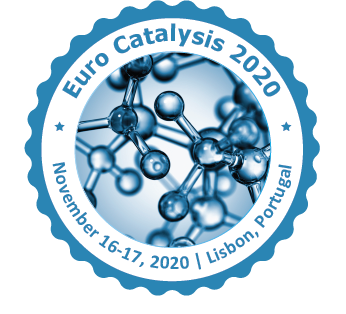Hikmat Karimov
Managing Director,Azerbaijan State Oil and Industry University, Baku, Azerbaijan
Title: Influences of external donors on MgCl2-Supported Ziegler-Natta catalyst for Polypropylene Polymerization
Biography
Biography: Hikmat Karimov
Abstract
The Influences of external donors on MgCl2-Supported Ziegler-Natta catalyst, which is containing diethyl phthalate, diisobutyl phthalate and di-n-octyl phthalate internal donors have been investigated. New and improved processes require full control of kinetics, polymer properties and particle morphology. Typically, the catalyst is combined with an aluminum alkyl for the activation of the active center and an external donor for selectivity control, also known as the selectivity control agent. The activity of catalyst decreased when the ED was added, while the isotactivity increased. When increase the ED concentration, the activity of the atactic fraction decreased clearly, however isotactic polymer fraction in comparison with increased. Increasing of isotactic polymer fraction is mainly because of the raised number of stereospecific sites and the reduced number of nonstereospecific sites in the presence of external donor. With consider to PTES and PTMS influence on the isotactic index of polypropylene, there was not evident variation among the catalysts. The catalyst systems using PTMS and DIBP as an ED and ID, considering the relation to the activity of the catalyst, respectively, were the best. In these systems, the isotactic index raised with less reduction in activity. Regarding PTMS and DPDMS effects on the I.I, we achieved that the last, when used as an ED, is better than the former regardless of any ID. With simple instrumentations, spherical MgCl2 supports were prepared at a lower stirring speed of dispersion (600 - 2000 rpm). When the EtOH/MgCl2 ratio ranged from 3.0 to 3.5, the ethanol content in the resultant supports was appropriate for preparing Ziegler–Natta catalysts without removing the unneeded ethanol. ED, coordinating on titanium atoms adjoining magnesium atoms, could poison atactic active sites or converted them into isotactic ones. Overall, the percentage of the active sites in the system got the dominance. The result of investigation indicates that the activity of catalyst decreased while the isotactivity increased.

